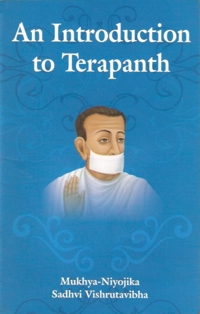For some years, Acharya Bhikshu carefully observed the conduct and behaviour of the monastic code. Later on, he enacted the constitution of Terapantha order and its rules and regulations with the intention of making the order vibrant with energy, at the same time ensuring that conduct would remain pure, that monks and nuns would live cordially with each other, and that there would be strict discipline, good management, hearty and dedication making the Acharya the nucleus.
On Asadha Purnima of V.S. 1817, Muni Bhikanji had re-initiated himself in the true conduct of Jain ascetic, and thus ensued the sect of Terapantha, and Acharya Bhikshu became the first Acharya of Terapantha. Four of the thirteen monks were present there at the time of his initiation; the rest were in other village. In due course, out of the thirteen monks, only six monks (including Acharya Bhikshu) were left in Terapantha. The remaining seven eventually separated themselves from Terapantha. Acharya Bhikshu however never compromised with the qualitative aspect for the sake of quantity. He built the edifice of Terapantha on the foundation of purity, and not on mere numbers.
Acharya Bhikshu had never imagined that a duly organized Sangha would come into existence on the basis of his spiritual path that monks and nuns in good number would be initiated and that male and female lay followers would also join his order. His only aim was the attainment of the ultimate spiritual good and bliss even at the cost of his own life.
The salient features of the Constitution of Terapantha are as follows:
- All the monks and nuns should remain as the disciples of only one (Current) Acharya.
- Chaturmas, sojourns on foot etc. will be undertaken according to the directives of the Acharya.
- The present Acharya will nominate his successor, who has to be accepted by all the members of the order as their next Acharya.
- Only the Acharya, and none else, has the right to initiate any monk or nun as his/her disciple.
- All things such as clothes, utensils, books, and manuscripts will belong to the Acharya, and not as an individual belonging.
Although the Acharya is the supreme head of the order, he may seek the advice of the learned monks or nuns for his decision. Further, he may invite them to join in the discussions over the controversial issues.
Acharya Bhikshu enacted the constitution and placed it before each and every monk and nun separately. Everyone agreed to it and duly signed it in support of it. That signed document of maryadas is safe till today.
 Sadhvi Vishrut Vibha
Sadhvi Vishrut Vibha

